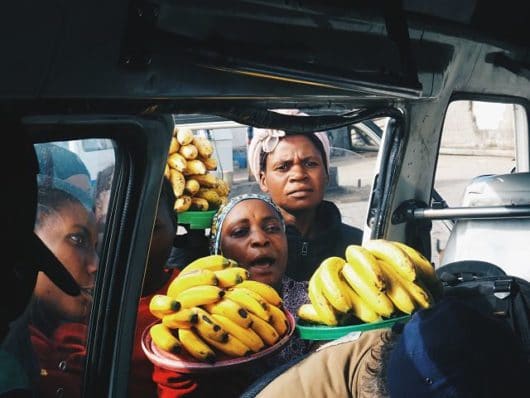Top 10 Facts About Living Conditions in Tanzania
 Tanzania is an East African country best known for its safaris, the Serengeti National Park and the “big five” game, or the elephant, lion, leopard, buffalo and rhino. But what does it feel like to live and work in this country? How do natives of Tanzania go about everyday life? In the article below, top 10 facts about living conditions in Tanzania that will try to answer these and other questions, are presented.
Tanzania is an East African country best known for its safaris, the Serengeti National Park and the “big five” game, or the elephant, lion, leopard, buffalo and rhino. But what does it feel like to live and work in this country? How do natives of Tanzania go about everyday life? In the article below, top 10 facts about living conditions in Tanzania that will try to answer these and other questions, are presented.Top 10 Facts About Living Conditions in Tanzania
- The land is a very important asset in safeguarding food security. The nine main food crops in Tanzania are maize, sorghum, millet, rice, wheat, beans, cassava, potatoes and bananas. The Tanzanian government encourages 25 million young people to choose agricultural industry as their line of work. Tanzania’s agricultural industry makes more than $1 billion in crop export per year and contributes to nearly 30 percent of the country’s GDP.
- Self-employment is very popular in the country. One out of every three Tanzanians runs a small business such as a restaurant, shop or a consulting company that employs less than nine employees. Entrepreneurship is a major stepping stone for the citizens of the country as it allows them to be self-sustainable.
- Tanzania’s urban population is mostly concentrated in Dar-es-Salaam, the biggest city, who has 4.3 million people and Zanzibar with 1.3 million. Both cities have metro areas and a port of entry. Even though these two cities are urban meccas, 80 percent of Tanzanians still live in rural areas.
- Tanzania has a fast population growth and a high fertility rate. In 2012, Tanzania had a population of 49 million and today the population is around 60 million. Tanzanian women have five children on average. In addition, the death rate is falling, and citizens are living well into their late 60’s. It is projected that Tanzania will have 100 million citizens by 2035.
- The Government of Tanzania pays some of its deficits thanks to its minerals industry. Gold is a major commodity with $1.46 billion being exported in 2017 and around one million people being employed by the mining industry, making Tanzania the third largest African nation to produce this mineral. The Minerals minister wants at least 10 percent of the mineral company’s earnings to go to the country’s GDP by the year 2025. This stemmed from a tax issue with Acacia Mining Plc, one of the largest gold mines in the country.
- Thirty percent of Tanzania land is a national park and the country is surrounded by three of the largest lakes in the world. However, Tanzania is struggling with water scarcity in rural areas. Only half of the population has access to clean drinking water. There are organizations who aim to fix this problem. The Water Project raises money to build new wells, fix neglected wells, build rain tanks and protect springs. They work with the communities and locals to determine what are the best options and solutions.
- Tanzania’s climate ranges from tropical to temperate. Farms and livestock depend on the rain, but years of drought have brought famine to the country. Tanzania has had a drought period since 2017 and is suffering from less than 30 percent of its normal rainfall. Due to the lack of water, almost 4,000 livestock have been killed, With the dying animals and lack of crops, there is a fear this will lead to food shortages in an already poverty-stricken country.
- Over 35 percent of Tanzania’s population lives in extreme poverty. A major cause of this is the country’s low pace of urbanization. Around 34 percent of the population lacks basic amenities such as electricity, sanitation and education.
- Former president and father of Tanzanian independence Julius Nyerere was a teacher. Today, the country ranks at the bottom in terms of education. While 94 percent of children enroll in school at the primary level, 20 percent of students drop out before finishing, and only 15 percent complete secondary school. Some reasons for this are lack of trained teachers, lack of money and not lack of space in schools. In 2015, Tanzania abolished school fees and tuition in hope that more children would be able to attend school. But even though official school fees are no longer required many students still can not afford to attend lessons due to other costs such as uniforms, transportation and books.
- In Tanzania, psychology does not represent a discipline. Psychological services are not yet regulated and universities do not even have a department named for it. Bloom Consultancy is a local organization that is hoping to educate Tanzanians on how to be mentally healthy and keep maintaining good mental well-being. Most natives would compare mental health with having a mental illness. Recently, with technology development, there has been an increase in awareness of this issue. Tanzanian Psychological Association has been founded in 2009 and Muhumbili National Hospital in Dar has also started providing support groups and psychology educational seminars for Tanzanians.
Some of the top 10 facts about living conditions in Tanzania are hard to comprehend while others show signs of hope for the country. Even though Tanzania has areas that need improvement, like education and universal access to clean water, it has made strides in improving mental health acceptance, self-employment and usage of natural resources. The country is improving with help from the government and the people who call Tanzania home.
– Jennifer O’Brien
Photo: Unsplash
